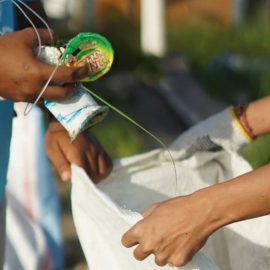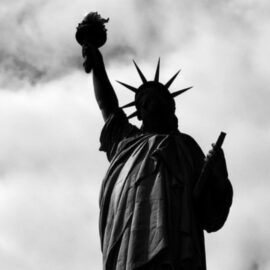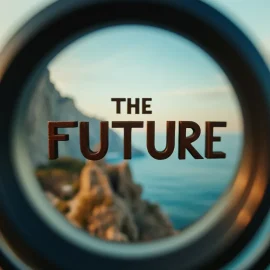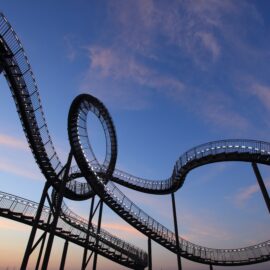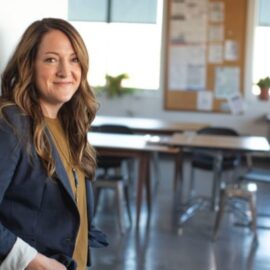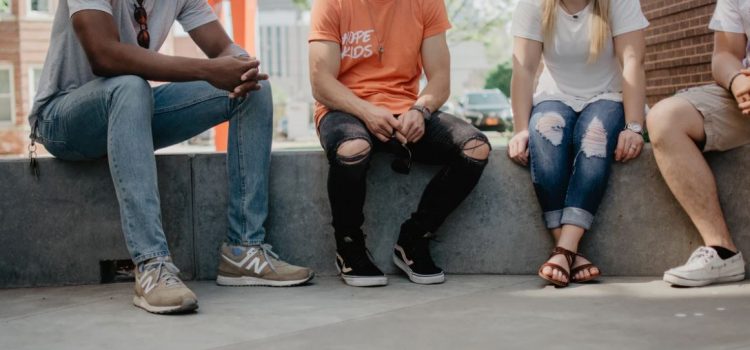
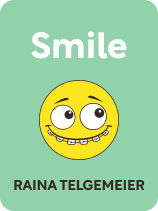
This article is an excerpt from the Shortform book guide to "Smile" by Raina Telgemeier. Shortform has the world's best summaries and analyses of books you should be reading.
Like this article? Sign up for a free trial here.
How do cliques in high school affect children? What are some examples of high school cliques?
In Smile, graphic artist Raina Telgemeier recounts her adolescence, including the struggles of trying to fit in when she felt self-conscious and excluded. The novel depicts her encounter with cliques in high school and Telgemeier’s experience of social exclusion.
Keep reading for an example of Telgemeier’s account of high school cliques from her novel Smile.
The Problems With Cliques in High School
Comic artist Raina Telgemeier grew up in San Francisco, California, where her novel Smile takes place, and she later moved to New York City to pursue a degree in illustration. Smile (published in 2010) is her first graphic novel, and it earned her the Eisner Award for Best Publication for Kids and Best Writer/Artist. She’s since published several other award-winning graphic novels for upper elementary and middle school readers. In this article, we’ll explore an excerpt from Smile that depicts Telgemeier’s experience with cliques in high school and social exclusion, including how the experience affected her.
Raina Begins High School
Raina begins her first day of high school feeling more confident than usual: She likes how she looks in her new outfit, and her years of dental treatment have made her teeth look “almost-normal”—“almost” because she still has braces.
(Shortform note: Braces were the most common way for teens to straighten their teeth in the late 90s and early 2000s when Raina was a teen. Today, teens have an additional option for straightening their smile: using clear plastic aligners. While many teens prefer the look of clear aligners over that of braces, these aligners have several drawbacks that braces don’t have—for instance, you have to be disciplined about cleaning them well and remembering to put them back in.)
Despite Raina feeling confident on her first day of high school, her confidence plummets when she joins her friends from eighth grade for lunch and overhears them reminiscing about summer plans that she hadn’t been invited to—this is the first example of a clique that Raina encounters. This social exclusion soon escalates to hurtful teasing. Raina’s friends tease her when they see all of the items Raina has to carry in her backpack to maintain her oral health (such as mouthwash, rubber bands, and dental wax).
(Shortform note: When Raina’s high school friends discuss their summer plans in front of her, they’re arguably acting like a clique. Experts define cliques as social circles that are “closed groups,” meaning these groups define themselves by excluding people who don’t meet their criteria for belonging. When Raina’s friends tease her about her collection of dental supplies, they’re reinforcing the boundaries of the high school clique and suggesting that Raina doesn’t meet their criteria for inclusion due to her dental issues.)
Raina Stands Up for Herself
The teasing at Raina’s high school soon escalates further when one of the girls in the clique has the “funny idea” to pull her skirt down while she’s waiting in the vending machine line during lunch. Raina storms off in a fit of tears. When her friends once again tell her to lighten up, Raina responds differently than she had in the past: She passionately scolds her friends for disrespecting her for so many years, and she declares that she’s done being their friend. Afterward, Raina proudly reflects that her choice to stand up for herself robbed her friends of the power they’d had over her for the past several years.
Raina’s High School Experience Improves
Fortunately, soon after the vending machine incident, Raina makes new friends in high school outside of the clique. A friendly girl in her gym class invites her to join her and her friends for lunch. Over time, they get closer, and they enjoy participating in Japanese Club and student council together.
Furthermore, the day finally comes for Raina to get her braces removed. When Raina first looks at her teeth in the mirror following the appointment, she’s upset—her teeth appear discolored and misshapen. However, her worries dissipate when her new friends compliment her on her teeth and tell her she looks cute.
Exercise: Plan How to Support an Adolescent You Know
Telgemeier’s graphic novel shows both how difficult it is to be a teenager—as well as how rewarding it can be for teens to persist through their challenges and achieve confidence. Think about how you could support an adolescent in your life.
- Think about a teenager in your life who is struggling with their confidence. (They could be your child, a family member, someone you work with, or someone you teach.) Note down who this teenager is, the confidence struggles they have, and why you think they may struggle in these areas.
- Which aspects of Raina’s experiences overlap with those of the teen you’ve identified? (For example, perhaps your younger sibling is very introverted and struggling to make friends at his new high school, which overlaps with Raina’s struggle with the clique in her school and making new friends.)
- Raina learns that she’s happier when she’s immersed in her interests and surrounded by a community of friends, rather than focusing on her looks. How could you encourage the teen in your life to find confidence in their interests and/or build a more supportive community of friends? (For instance, you could ask your teen brother more about his gaming interests and recommend that he joins his school’s gaming club.)

———End of Preview———
Like what you just read? Read the rest of the world's best book summary and analysis of Raina Telgemeier's "Smile" at Shortform.
Here's what you'll find in our full Smile summary:
- An autobiographical novel of one middle schooler's traumatic experience
- The self-consciousness that comes with having braces as a child
- Tips for parents whose children are struggling with coming of age

